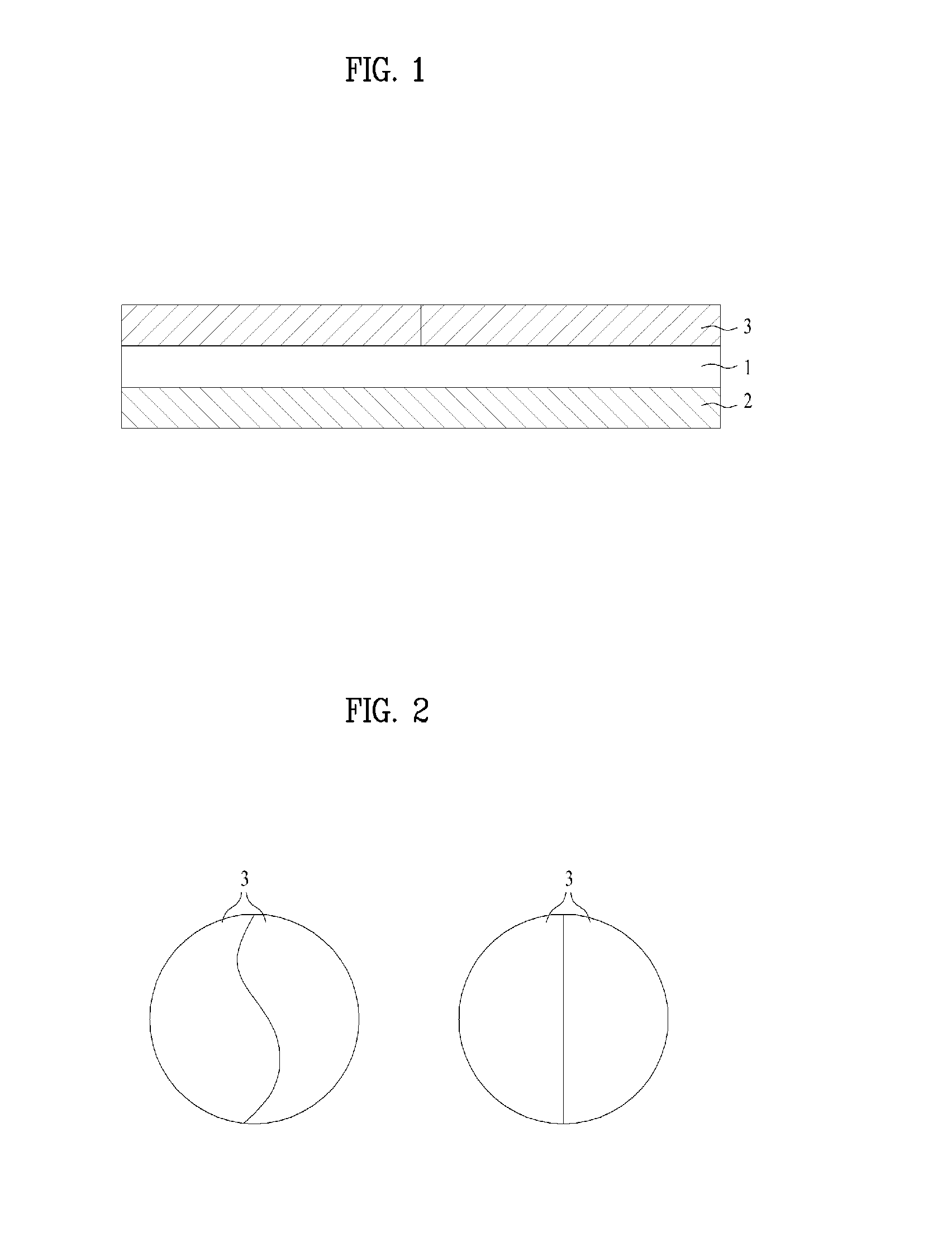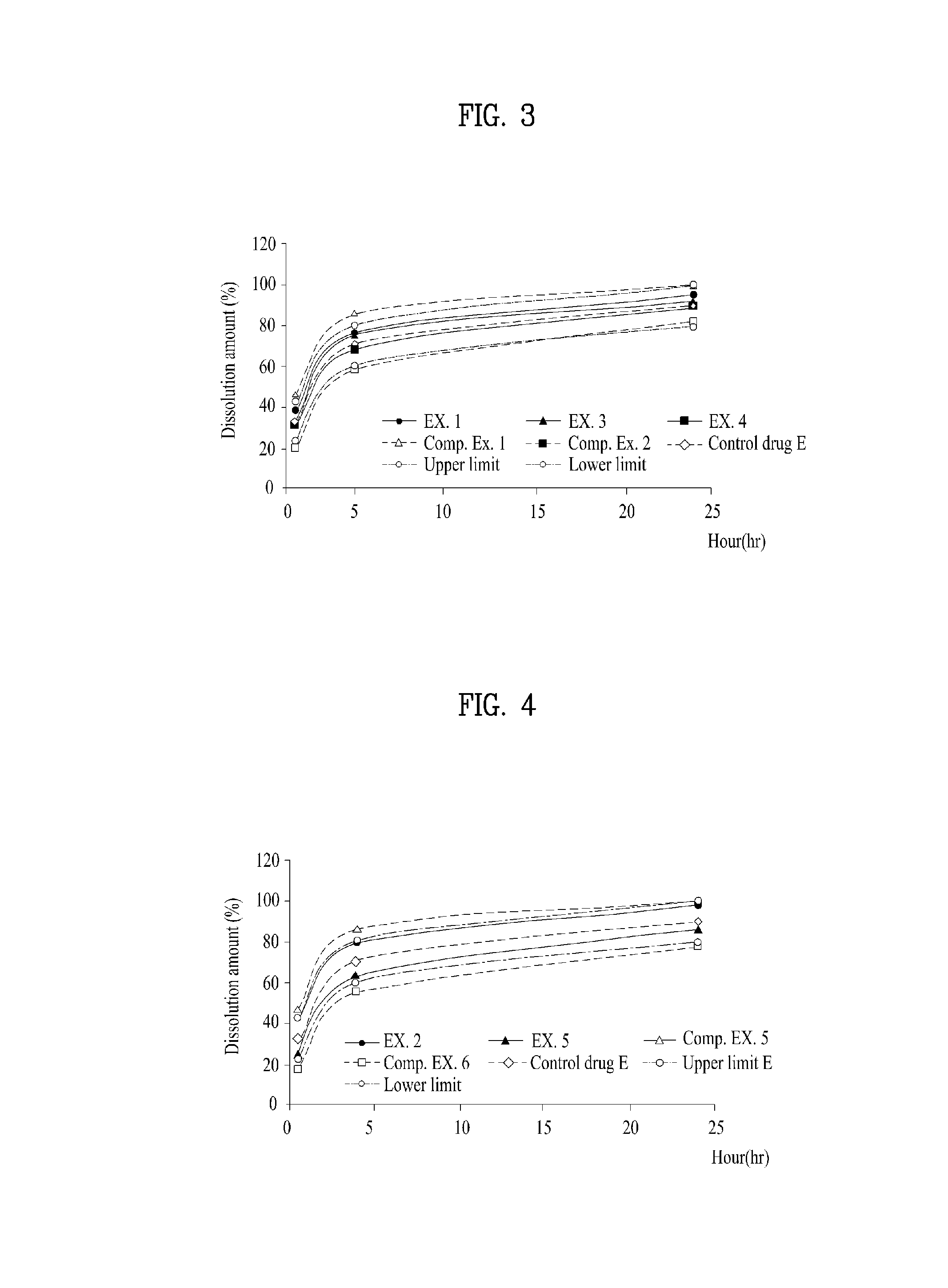[0014]It is one object of the present to provide a transepidermal drug
delivery system for treating Alzheimer's disease and Parkinson's disease-type
dementia which exhibits
drug dissolution and
skin permeation effects, comparable to Exelon Patch, as a control drug, (
trade name, manufactured by Lohmann Therapie-Systeme, AG; referred to as ‘control drug E’), is safe to the skin, exhibits superior adhesivity, and is prepared in a simpler manner than the control drug E.
[0015]During research on a transepidermal drug
delivery system compositions containing rivastigmine, the present inventors discovered that, when a drug layer consisting of a rubber and an
adhesive resin further contains an
acrylic adhesive, the drug layer exhibits superior adhesivity and
drug release and skin
permeation effects, comparable to the control drug E. The present invention has been completed based on this discovery.
[0023]FIG. 1 illustrates a tri-layer transepidermal drug delivery system containing rivastigmine according to the present invention. The tri-layer transepidermal drug delivery system according to the present invention exhibits
drug dissolution and skin
permeation effects comparable to commercially available control drug E and causes almost no
irritation of the skin. In addition, the drug layer is fixed to the skin due to superior adhesivity thereof, is not detached from the skin and absorbed in the skin at a
constant rate, although it is adhered to the skin for a long period of time. Accordingly, the transepidermal drug delivery system is considerably useful for the treatment of Alzheimer's disease and Parkinson's disease-type dementia.
[0027]The rubber according to the present invention may be used in an amount of 10 to 40 parts by weight, preferably 15 to 30 parts by weight in order to control the strength of the drug layer. When the rubber is used in an amount lower than 10 parts by weight, the strength of the drug layer decreases and when the rubber is used in an amount higher than 40 parts by weight, strength increases, adhesivity decreases and flexibility decreases. The rubber according to the present invention includes
natural rubber,
synthetic rubber or a mixture thereof, preferably
natural rubber,
isoprene rubber, polyisobutylene, a
styrene-butadiene block
copolymer, a
styrene-butadiene-
styrene block
copolymer, a styrene-
isoprene-styrene block
copolymer or a mixture thereof.
[0032]In the present invention, the drug layer has a thickness of 40 to 100 μm, preferably 50 to 90 μm. When the thickness of drug layer is lower than 40 μm, the concentration of drug contained in the drug layer increases, and
dissolution and transdermal absorptivity of the drug increase. In addition, when the thickness of the drug layer is higher than 100 μm, the concentration of drug contained in the drug layer decreases, and
dissolution and transdermal absorptivity of the drug thus decrease.
[0033]The supporter 2 used in the present invention supports the drug layer, prevents
contamination by foreign materials when adhered, and allows the drug to be administered to the skin to prevent
reverse diffusion of the drug. The supporter includes a
polyester film on which transparent, semi-transparent or non-transparent aluminum is deposited, a
polyester film on which non-
woven fabric is laminated, a
polyethylene terephthalate film or a combination thereof. Preferably, the supporter has a thickness of 5 μm to 50 μm. When the thickness is lower than 5 μm, the supporter is non-uniformly laminated to the drug layer during manufacture due to high flexibility thereof. On the other hand, when the thickness is 50 μm or higher, the delivery system may be readily detached from the skin during movement due to excessively low flexibility of the delivery system, although adhesivity of drug layer is high.
 Login to View More
Login to View More 


